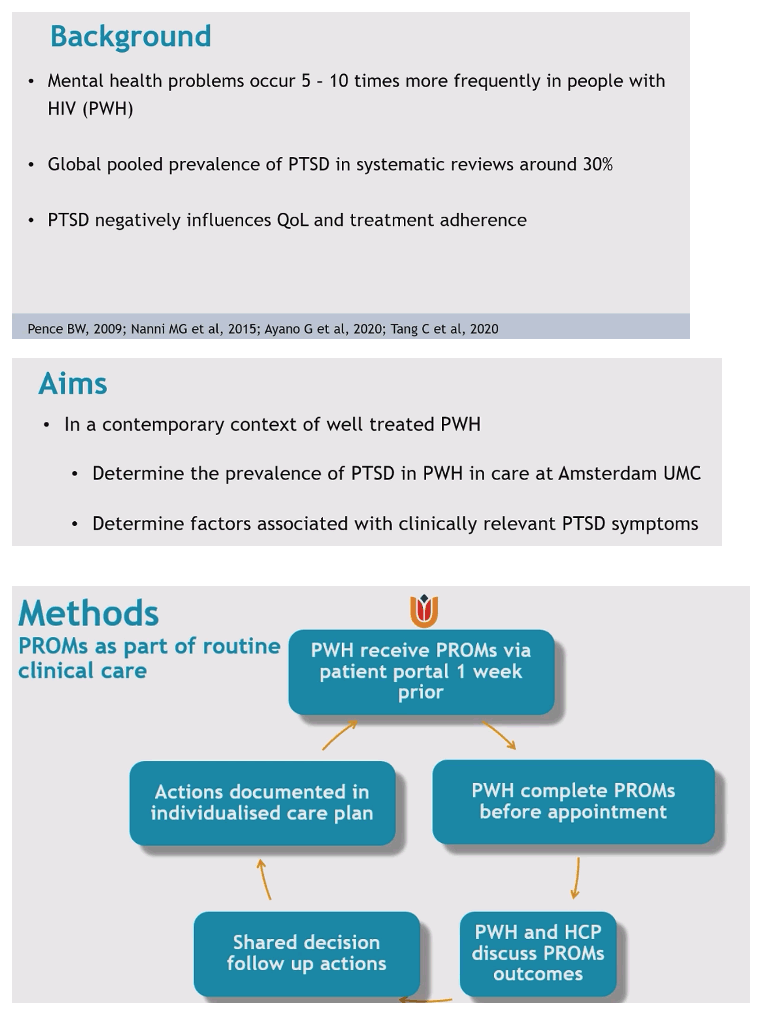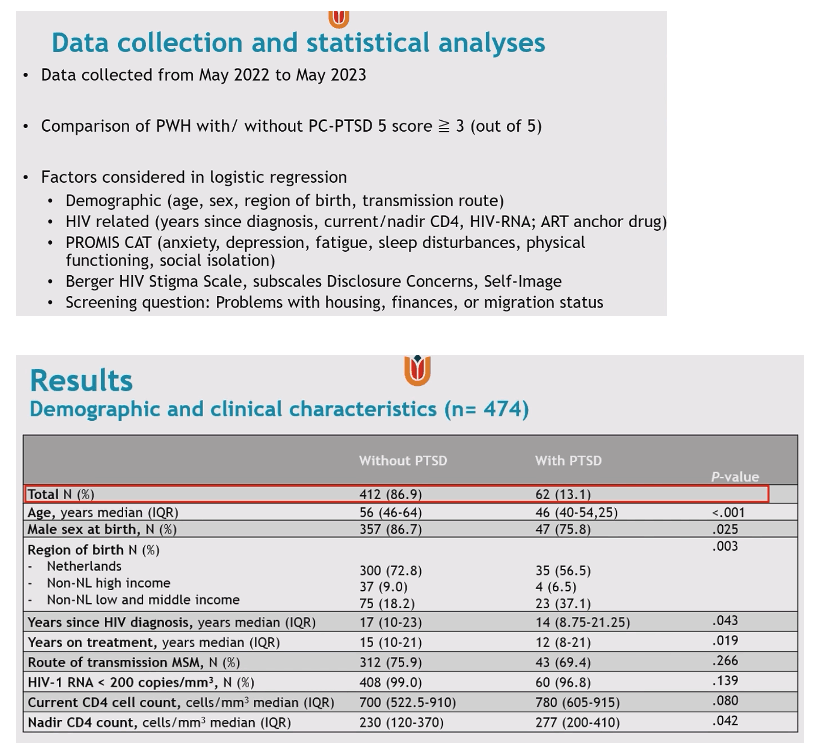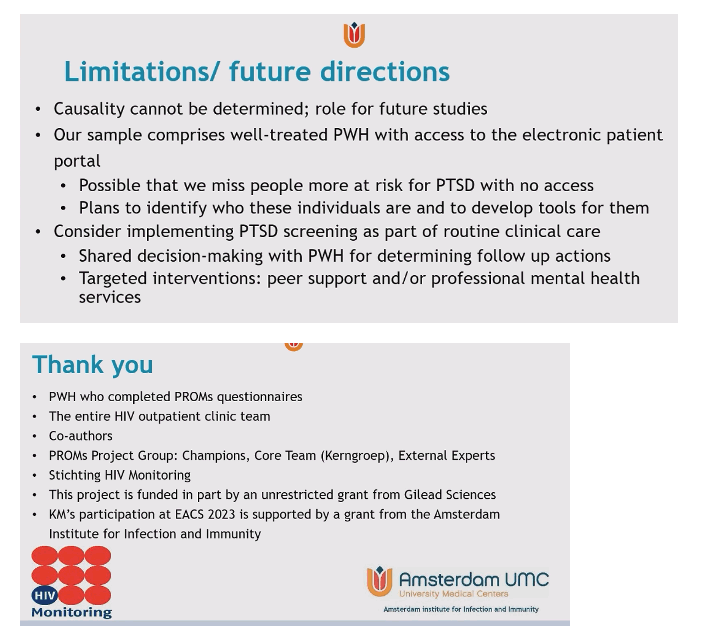 |
 |
 |
| |
One in Eight Amsterdam ART Responders May Have PTSD
|
| |
| |
EACS 2023, October 18-21, 2023, Warsaw
"findings suggest all PLWH should receive PTSD screening and follow this up with support activities that could include peer support, professional mental health services"
Mark Mascolini
About 1 in 8 people with HIV well controlled by antiretroviral therapy (ART) could have active post-traumatic stress disorder (PTSD), according to results of a standard screen completed by 474 outpatients in Amsterdam [1]. Age under 50, depressive symptoms, and fatigue raised odds of PTSD in this group.
Researchers from Amsterdam University and collaborators from other centers noted that mental health problems may affect people with HIV 5 to 10 times more often than the general population. Two systematic reviews estimated global pooled prevalence of PTSD at around 30%, but the Amsterdam team noted that many of the studies considered took place in sub-Saharan Africa or in specific US populations and not in recent years.
To get a better handle on PTSD prevalence and risk factors in a contemporary HIV population responding well to ART, the Amsterdam investigators invited HIV-positive people in their clinic to complete a PTSD screen online 1 week before a scheduled visit. They collected data from May 2022 to May 2023 and compared people with a PC-PTSD-5 score of 3 or greater with people scoring lower [2].
Among 474 HIV-positive people assessed, 62 (13%) screened positive for PTSD. Compared with the 412 people without PTSD, those with the disorder were younger (median age 46 vs 56, P < 0.001), less likely to be male at birth (75.8% vs 86.7%, P = 0.025), and less likely to be born in the Netherlands (56.5% vs 72.8%, P = 0.003). The PTSD group had fewer median years since HIV diagnosis (14 vs 17, P = 0.043), fewer years taking ART (12 vs 15, P = 0.019), and a higher median nadir CD4 count (277 vs 230, P = 0.042).
A significantly higher percentage of people with than without PTSD had moderate to severe anxiety, depressive symptoms, fatigue, sleep disturbances, and social isolation on PROMIS CAT testing [3]. The PTSD group had a significantly worse self-image on the Berger HIV Stigma Scale [4], and a greater proportion with PTSD had problems with housing, finances, or migration status (32% vs 8.9%, P < 0.001).

Multivariate logistic regression to identify factors independently associated with PTSD adjusted for numerous demographics, HIV-related factors, PROMIS CAT disorders, Berger HIV Stigma Scale variables, and screening questions about housing, finances, or migration status. Three factors emerged as independent predictors of PTSD at the following odds ratios (OR) (and 95% confidence intervals):
- Age younger than 50 vs older: OR 3.01 (1.40 to 6.47)
- Depressive symptoms: OR 4.58 (1.83 to 11.43)
- Fatigue: OR 3.08 (1.37 to 6.93)
The Amsterdam researchers asked clinicians to consider making PTSD screening part of routine clinical care for people with HIV. They suggested that shared decision making with HIV-positive people who screen positive for PTSD could help determine how to address this problem, perhaps through peer support or professional mental health services.
References
1. Moody K, Smit C, Nieuwkerk PT, et al. PC-PTSD-5 self-reported screening tool introduced as part of routine clinical care detects high levels of clinically relevant PTSD symptoms in well-treated people with HIV. EACS 2023, October 18-21, 2023, Warsaw. Abstract OS1.04.
2. US Department of Veterans Affairs. Primary Care PTSD Screen for DSM-5 (PC-PTSD-5). https://www.ptsd.va.gov/professional/assessment/screens/pc-ptsd.asp
3. National Institutes of Health. Patient-Reported Outcomes Measurement Information System (PROMIS). https://commonfund.nih.gov/promis/index
4. Wanjala SW, Too EK, Luchters S, Abubakar A. Psychometric properties of the Berger HIV Stigma Scale: a systematic review. Int J Environ Res Public Health. 2021;18:13074. doi: 10.3390/ijerph182413074





|
| |
|
 |
 |
|
|